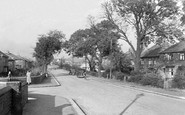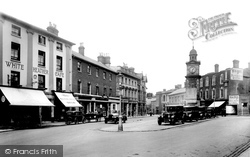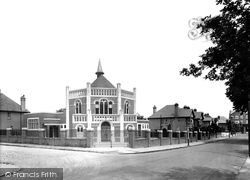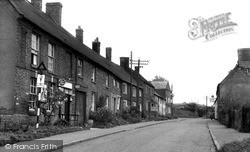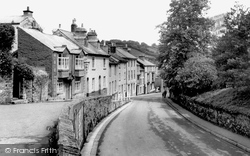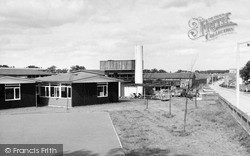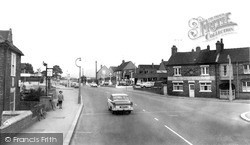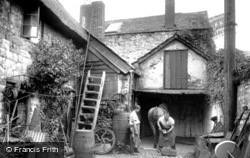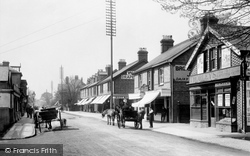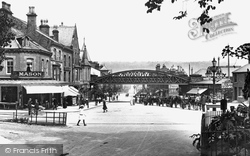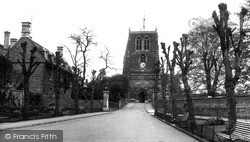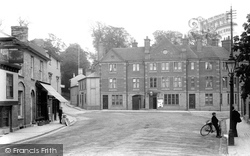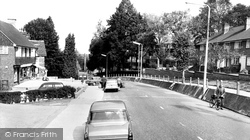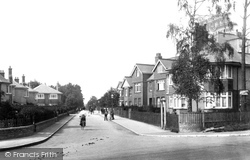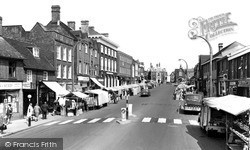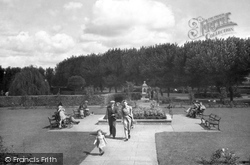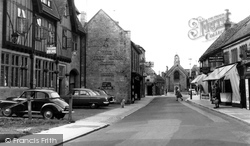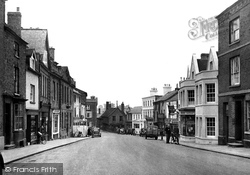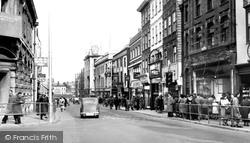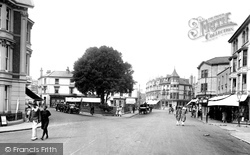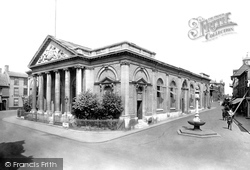Places
4 places found.
Those places high-lighted have photos. All locations may have maps, books and memories.
Photos
115 photos found. Showing results 321 to 115.
Maps
21 maps found.
Books
Sorry, no books were found that related to your search.
Memories
1,091 memories found. Showing results 161 to 170.
Fond Memories Of Clare
I was with the RAF stationed at Stradishall and only just married and searched for a place to live at Clare. Coming from London I found the pace of life was in a much lower gear than I had been used too but it did not take me ...Read more
A memory of Clare in 1953 by
Woodville Road, Ham, Prefabs
My Family moved into the newly built Prefabs in Woodville Road when they were first opened up for occupancy. I can't remember what year it was. Does anybody know what the date was? The Prefabs were kitted out with a Fridge which ...Read more
A memory of Ham by
School Days And Beyond
Having just stumbled on this website I felt compelled to add my recollections of living in Fenham in Cheeseburn Gardens from circa 1961 to 1980. I lived 2 streets down the hill from the first contributor who lived in Ovington ...Read more
A memory of Fenham by
The Fountain Pub
I remember going back to visit New Malden at about 9 years old and eating in the wimpey . We went to revisit as I’d lived in the fountain pub as a baby in 1967 with my mum , who worked there . Details are so vague . The high street ...Read more
A memory of New Malden by
South Stifford And Grays
After my grandparents passed away the house was left to my father bill mercer.we lived at 64 Charlton street south stifford.I remember the cement works very well as I along with my friends peter Baldwin and Dave whitehead we ...Read more
A memory of Grays in 1964 by
Memories Of Aberkenfig
I think this was in the mid fifties. We lived at 15 Dunraven Street and at the top of the street there was quite a steep hill (it's all closed off now) and at the top of the hill was an entrance to the Forestry Commision ...Read more
A memory of Aberkenfig by
Memories Of Council Estate And Football
My family moved to the council estate in Elstree in the mid sixties. I used to play football on the pitch opposite Hill House, now sadly a new housing estate. Robert Stores for groceries, the aptly named Greens ...Read more
A memory of Elstree in 1967 by
Aston Terrace
I was born in Aston Terrace in 1954 and remember running to the bridge to see the steam trains and also the big slag heap that my brothers used to slide down. I also remember the gas man that used to light the street gas lamps outside our ...Read more
A memory of Aston in 1954
Growing Up In Gildersome
I was born in 1952 and lived in Gildersome until I was 19 years old. My name until then was Lorraine Thompson. I have many happy memories of living in the village. Until I was 4 years old I lived in a terrace called Green ...Read more
A memory of Gildersome in 1952 by
East Ham Memories
I was born in Plashet Grove in 1951 but shortly moved to 146 Milton Avenue until moving away from the area in 1967. So many memories. Happy days playing in Plashet Park, 30 a side football in Milton Avenue with a case football ...Read more
A memory of East Ham in 1951 by
Captions
544 captions found. Showing results 385 to 408.
Freed of livestock, the Saturday market became a more congenial place; it was thriving and prosperous, despite competition from a new Monday market introduced in 1883.
THE YEARS of decline that had marked the first part of the 1990s were decisively reversed during the last years of the old century and the early years of the new millennium.
The wide arched entrance to The New Inn is a reminder that Lechlade was once an important coaching town.
Turning left into Park Street, we turn right into Southwell Park Road. The road on the left is Southern Road.
It is claimed that Stockton has the widest High Street in England - a good example of early town planning!
This view of Welton, looking back up the main street, has changed dramatically in recent years.
Off West Street, behind Sparnham House, was the site of one of Ashburton's two umber mines - the only ones in the country.
Potter Street Junior School and the infant school were on the same campus, and were typical of the many schools that had to be provided quickly for the very large percentage of school-age children in Harlow
We can see the signboard for the new Fountain public house on the left beside the street lamp, but the pub is set back out of sight. The major roundabout is visible at the end of the road.
Amid displaced stairs and other paraphernalia, Samuel Govier (1855-1934) shoes a horse at the forge in Broad Street, where in 1895 he had been immortalised by the American artist James
Horley is on the old main London to Brighton road before it was diverted around the area of new Gatwick airport. Single and two-horse traps wait by the roadside.
In this photograph, taken a few years after 56473 (pages 30-31), horse carriages still await their fares in the centre of Brook Street.
Built around its fine market place, it found new life in the 19th century when it joined Northamptonshire's boot and shoe industry with several factories and terraces of hard red Midland brick houses.
This was built in 1901 at the junction of Newton Road, King Street and Cornard Road. The police establishment comprised an inspector, a sergeant, and four constables.
The street lighting has been upgraded, though the gradient of the road still forced the cyclist to dismount to push his bike.
Turning right at the top of the High Street into London Road, and taking the first road to the left, we find ourselves in King's Ride, which would take us onto Barossa Common.
Ten years has made a tremendous difference in the appearance of both street and market day. The stalls are more tidy and professional in the goods on display.
The High Street was laid out in 1826 as New Road, but development off the hill was slow.
In April 1936, the owners of the Half Moon Hotel purchased the neighbouring premises of Dingley's, drapers, outfitters, milliners and hosiers, and soon the new building had been redesigned
The school was originally on Bridge Street. It moved here to these new buildings on Derby Road (now called Back Lane) in 1859, having outgrown the original premises.
This view of the High Street shows many buildings that have either since disap- peared or have been radi- cally reworked.
Further down Northgate Street is The New Inn, still in business today and one of the best-preserved medieval galleried inns in the country.
Skirts and hair were shorter than ever before in the new decade! A two hour horse-drawn carriage ride for four people cost two shillings (10p).
The urns have been removed from the parapet, and a new doorway inserted since 1898. Everard's Commercial Hotel is to the left, and in the distance is the earlier Corn Exchange of 1836.
Places (4)
Photos (115)
Memories (1091)
Books (0)
Maps (21)




